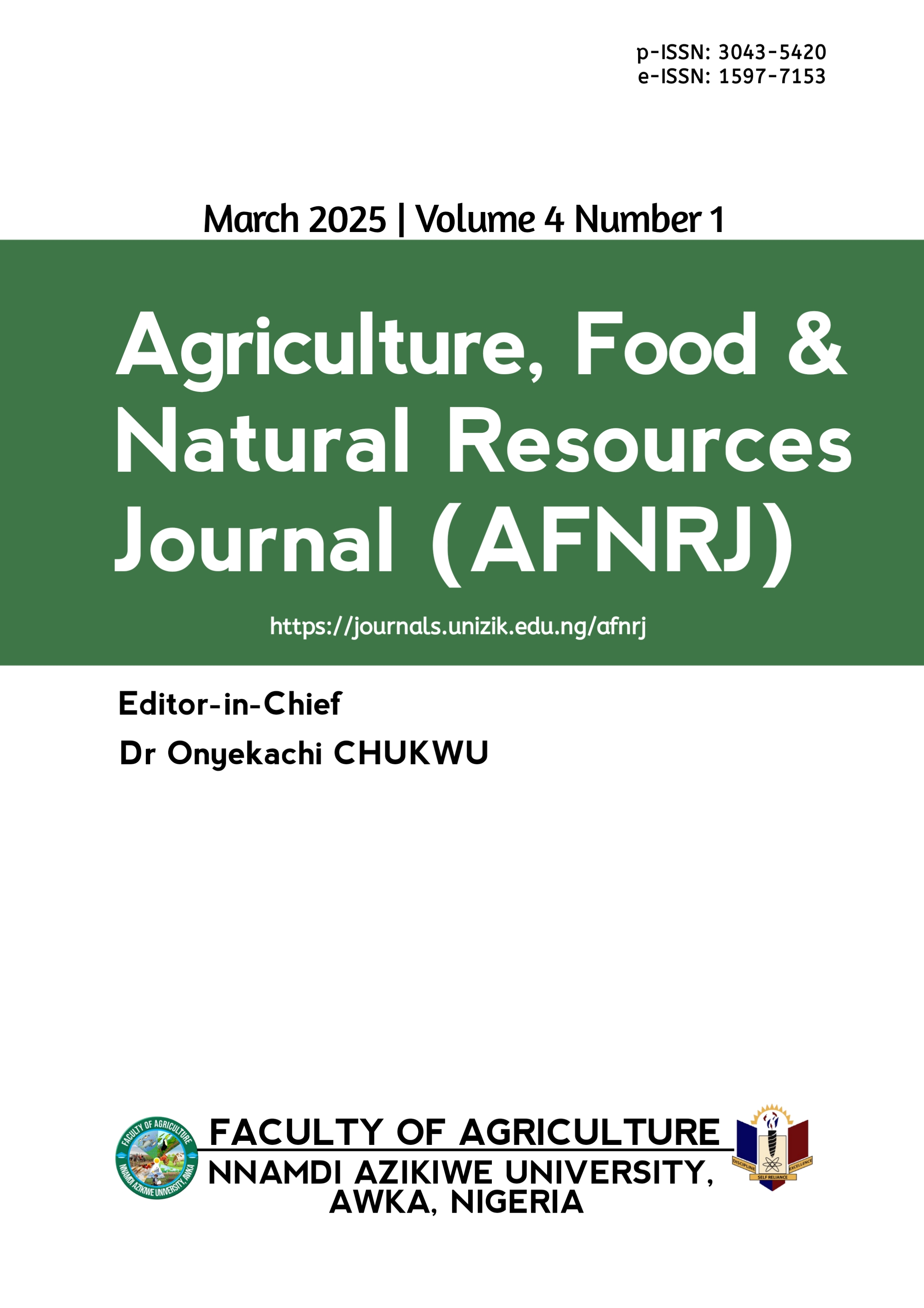Assessment of factors influencing investment among cassava processors in Imo State, Nigeria
DOI:
https://doi.org/10.5281/zenodo.15106667Keywords:
Agriculture, Credit, Savings, ProcessingAbstract
One of the best strategies to combat hunger and poverty, increase agricultural output, and improve environmental sustainability is to invest in agriculture. The specific objectives of the study were to analyze the factors influencing investment among cassava processors in Imo State and examine the constraints to investment among cassava processors in Imo State, Nigeria. A multi-stage sampling technique was used to select 160 respondents. Primary data were collected through the use of a structured questionnaire, complemented with an oral interview, and were analyzed using descriptive and inferential statistics. Results showed that age (2.728), savings (5.878), interest (-2.129), value of credit obtained (2.576), and income (3.499) were responsible for 85.6% of the variations observed in the investments of cassava processors. The constraints to investment among cassava processors were categorized to be financial, marketing, and processing constraints. The study revealed that age, savings, credit access, and income positively influenced cassava processing investment, while high interest rates deterred it. These findings suggest that financial support and lower interest rates are essential to encourage investment growth. It is recommended that incentives such as tax breaks, grants, or low-interest loans specifically for reinvestment in processing equipment and facility upgrades be developed and rolled out by the government and relevant stakeholders to make reinvestment more attractive by reducing the financial burden associated with upgrading processing infrastructure.
Downloads
Published
Issue
Section
License

This work is licensed under a Creative Commons Attribution 4.0 International License.
which permits unrestricted use, distribution, and reproduction in any medium, provided the original author and source are credited.
Authors retain the copyright of their published work in the AFNRJ.





